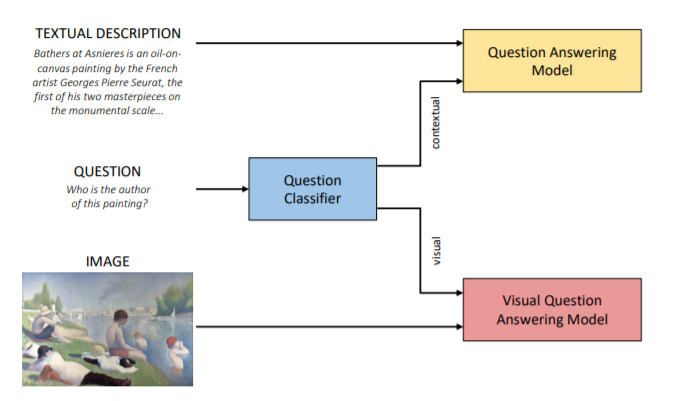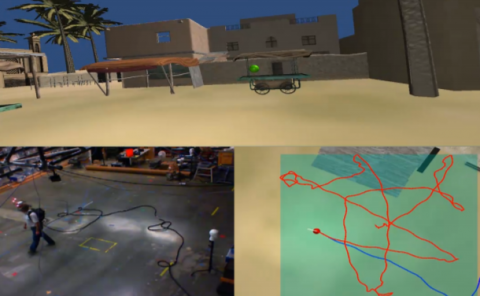Visual Question Answering for Cultural Heritage
PubDate: Mar 202
Teams: University of Florence
Writers: Pietro Bongini, Federico Becattini, Andrew D. Bagdanov, Alberto Del Bimbo
PDF: Visual Question Answering for Cultural Heritage

Abstract
Technology and the fruition of cultural heritage are becoming increasingly more entwined, especially with the advent of smart audio guides, virtual and augmented reality, and interactive installations. Machine learning and computer vision are important components of this ongoing integration, enabling new interaction modalities between user and museum. Nonetheless, the most frequent way of interacting with paintings and statues still remains taking pictures. Yet images alone can only convey the aesthetics of the artwork, lacking is information which is often required to fully understand and appreciate it. Usually this additional knowledge comes both from the artwork itself (and therefore the image depicting it) and from an external source of knowledge, such as an information sheet. While the former can be inferred by computer vision algorithms, the latter needs more structured data to pair visual content with relevant information. Regardless of its source, this information still must be be effectively transmitted to the user. A popular emerging trend in computer vision is Visual Question Answering (VQA), in which users can interact with a neural network by posing questions in natural language and receiving answers about the visual content. We believe that this will be the evolution of smart audio guides for museum visits and simple image browsing on personal smartphones. This will turn the classic audio guide into a smart personal instructor with which the visitor can interact by asking for explanations focused on specific interests. The advantages are twofold: on the one hand the cognitive burden of the visitor will decrease, limiting the flow of information to what the user actually wants to hear; and on the other hand it proposes the most natural way of interacting with a guide, favoring engagement.


